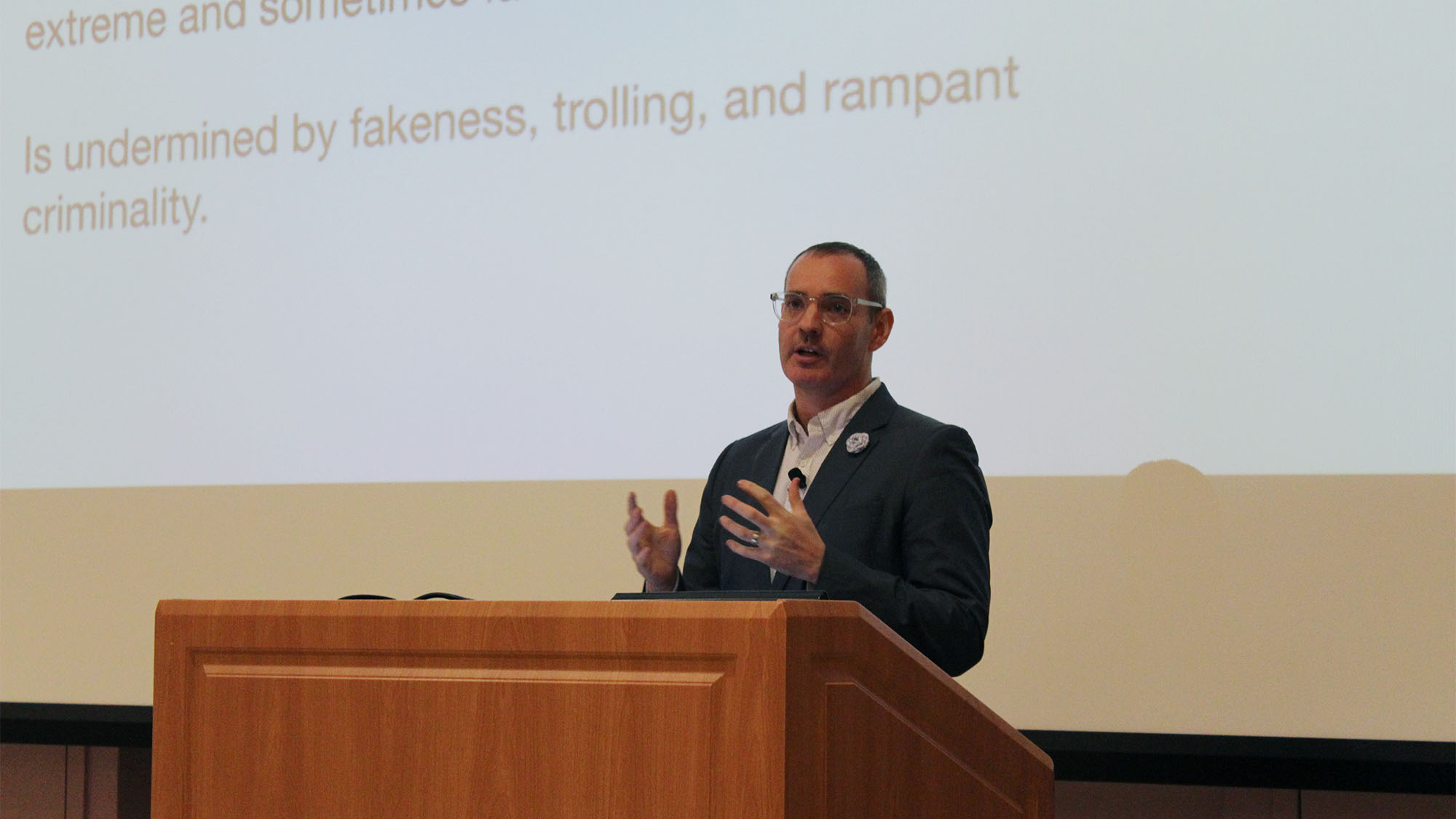The guide to beating ‘fake news’
BuzzFeed media editor Craig Silverman offers tips on how to identify and avoid misinformation

caption
Craig Silverman gives the keynote address at the Joseph Howe Lecture in Halifax on Nov. 7, 2019.Fake news is false “news” used to create and spread misinformation. Because of a lack of accountability on the internet, it has become a place where inaccuracies and lies can run rampant, with the people behind them facing little to no consequences.
Craig Silverman says the rise of fake news started with the presidential campaign of Rodrigo Duterte in the Philippines. During the campaign, many fake news websites were created in support of Duterte.
Silverman, a Canadian journalist and media editor for BuzzFeed News, is an internationally acknowledged expert on “fake news.” With BuzzFeed, Silverman partnered with the Toronto Star to monitor misinformation and disinformation in the 2019 Canadian federal election.
“The public now has more responsibility than ever before to think critically about the information they are seeing,” Silverman said in an interview. Related stories
“Hopefully they will develop a few skills around being able to figure out where the thing they are seeing came from. If we all have them, then we can stop the bad stuff from spreading as much as it does now.”
These are some of Silverman’s tips to identify and avoid false information.
When you read a story
Do you know if this story is from another website? If it is, look at where it was first published.
Who captured the content? Is the author of this piece the real author? Search for the story to see if it was written by somebody else.
What is the date? When was the story published? Many misinformation websites try to pass older stories as new. Search for when the reported incident happened and then check if the date the story says it happened is accurate.
What is the location? Where is the author saying this story took place? Is there anything in the story that you can use to make sure that it happened in the place they say it did?
When you see photos and video
Do a reverse image search. In Google Images, there is an option called “Image Search.” If you paste in the URL of a photo, it will tell you where that photo came from. Other useful tools to do reverse image searches are InVID and Yandex.
Check the metadata, which is the detailed information that comes with an original image. Right-click the picture file. Then click “properties.” Click “details” and the metadata will appear. If it does not have any, it may have been stolen from another website. Photos that are downloaded from social media will not have metadata.
Check the YouTube video’s URL. You can use the YouTube data viewer on the website Citizen Evidence. Just copy the URL of a YouTube video and paste it in their search bar. You can then view the details of the video. You can use this information to verify where the video came from.
When you’re using social media
When trying to verify if a social media account belongs to who it says it does, check the date the account was created. Be suspicious of newer accounts and look for other accounts with the same name or username. You can also search the name in quotation marks and do a reverse image search of the profile photo.
When you’re checking news websites
Find out if this website is what is appears to be. Click links, read about the website and look for author information and contact methods. If the website publishes articles, google some of the text to see if it’s plagiarized. You can also use the website Big Data Domain by pasting in the URL to see the website’s details.
For more information and for a list of tools for verifying online information, check out Silverman’s Verification and Digital Investigations Resources.
About the author
Jakob Postlewaite
Jakob Postlewaite is a fourth-year journalism student at the University of King's College. He has worked as a columnist and reporter for the...
